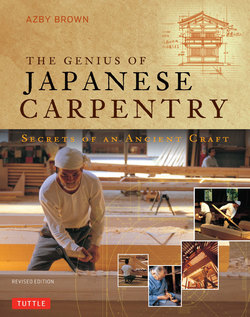Читать книгу The Genius of Japanese Carpentry - Azby Brown - Страница 9
На сайте Литреса книга снята с продажи.
ОглавлениеCHAPTER 1
WOODWORKING
IN JAPAN
In most discussions of traditional Japanese architecture, one of the first questions raised is why wood has been the primary building material, contrasting so sharply with the Western tradition, whose ancient monuments were almost always of stone and brick, and even with Chinese and Korean architecture, where masonry figures almost as prominently as wood. The Japanese invariably attribute their universal use of wood to the archipelago’s natural endowments. Wood and bamboo have existed in abundance from primeval times, while accessible and appropriate building stone was negligible. Seismic disturbances are also frequent. Hence, the reasoning follows, practical limitations dictated an exclusively wooden architecture.
We need not, perhaps, accept this explanation at face value. After all, Japan is a mountainous country with an abundance of rock, and a glance at the stone walks of medieval gardens, or at the meticulous masonry of castle retaining walls, reveals a highly refined aesthetic sensitivity and technical sophistication. Why were these techniques not utilized in the construction of entire buildings?
Figure 13 Master carpenter at work, from Shokunin zukushi-e, ca. 1640.
